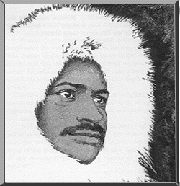 Matthew
Henson, Alexander Henson was born to free African
American parents in Charles County, Maryland on August 8, 1886. In
1867 Matthew's parents sold their farm and moved to Georgetown,
Maryland just outside Washington D.C.
Matthew
Henson, Alexander Henson was born to free African
American parents in Charles County, Maryland on August 8, 1886. In
1867 Matthew's parents sold their farm and moved to Georgetown,
Maryland just outside Washington D.C.
When Matthew was 13 he took a position as a cabin boy on a merchant ship. In the next five years he traveled the world while learning everything he could about seamanship. But, due to the racism and prejudice he experienced from white sailors, he left his life at sea when he was 18.
Soon after returning to the east coast, Matthew met Robert Peary, a lieutenant in the U.S. Navy. Peary offered Henson a job as his servant on an expedition to Nicaragua. During this time Henson demonstrated abilities in ways that proved extremely valuable to the expedition. As a result, Peary asked him to be part of an expedition that would ultimately reach the north pole.
Each expedition over the next two decades started from Greenland. It was here that Henson's experience at each attempt proved invaluable. He learned everything necessary from the native Innuit to live in the extreme climates of this hostile environment. In turn, he was responsible for training each member of the expedition including Commander Peary.
Finally, on April 7, 1909 Peary, Henson and several Innuit reached the north pole. It would not be for several decades though, that Henson would receive any credit at all for his contribution to the expedition. had on the expedition.
Matthew Henson died on March 9th 1955. Four years later, on April 6, 1959, a memorial plaque honoring the accomplishments of this great explorer was placed in the Maryland State House. Throughout his life Matthew Henson overcame great adversity. In doing so he demonstrated the finest qualities of the human spirit.
Gilman, M. (1988) Matthew Henson: Explorer. New York: Chelsea House Publishers.
Herbert W. (1989) The Noose of Laurels. New York: Macmillan Publishing Company.
Peary, R. (1910) The North Pole. New York: Frederick A. Stokes Company.
Hayden, C. (1992) 7 African American Scientist. New York: Twenty-First Century Books.
Page created by: Robert Harrison